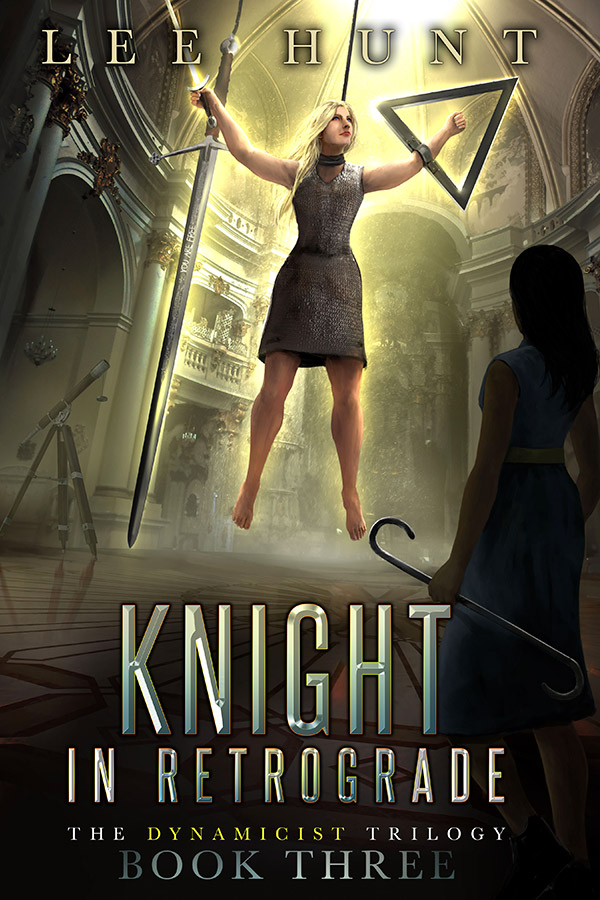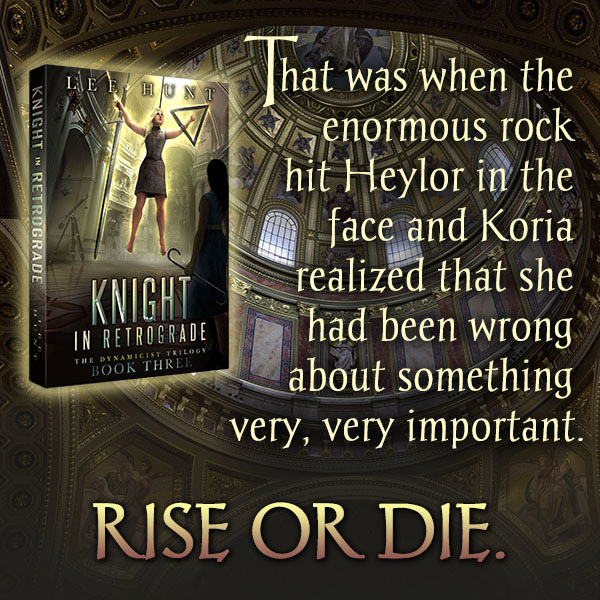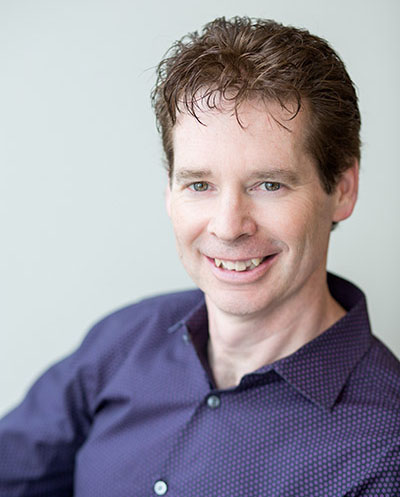‘Knight in Retrograde’ Blog Tour: Writing Knight in Retrograde

Today we’re joined by Lee Hunt the author of Knight in Retrograde, the third release in The Dynamicist Trilogy. For info about the trilogy, it is described as, “The Dynamicist Trilogy examines the difficulties of change in a fantasy setting. This challenge manifests itself through a rigorous magic system where thermodynamic cost is accounted for, and an inventor killing god. Most realistically, the challenge of creating a better world is illustrated by the many mistakes and miss-steps of the well-meaning and intelligent characters. The power and importance of memory, love and hope are ever present.”
Q. How would you describe your writing style/genre?
A. I mostly write high fantasy with an emphasis on character and thematic development. Some might describe my work as being on the intellectual side of fantasy, but this may be a function of the characters and themes that I have developed so far in my writing. I have an upcoming novel which I believe will have a very different feel.
Q. Do you ever base your characters on real people?
A. I would not say that I ‘based’ a character on a person. How about ‘inspired’? People inspire me every day, they surprise me, and sometimes I just have to do something positive with that inspiration. None of these characters are meant to be that (real) person or reflect their actions, though. The only thing real in the story is the theme.
Q. Has this ever led to an awkward moment?
A. Yes, it has. Davyn Daly’s characteristics are very heavily inspired by an engineer that I worked with. The real person is very intelligent and quite humorous, but you can bet he was very curious about what I was going to do with the character he inspired. As he read Dynamicist and Herald, he would mention his key observations. One day he came into the office and said in a huge voice, “Meaty!” which was a word I used to describe Davyn’s hands. Yes, he was teasing me for my many descriptions of how fat I depicted Davyn as being.
Q. Okay, we must know this: which other characters were ‘inspired’ in some way by people you know?
A. Eoyan March was heavily inspired by a friend of mine. A geologist. Gregory Justice is inspired by a professor of astronomy and physics that I have been friends with for a long time. I took some of my own personality and put it into both Heylor Style and Robert Endicott. To be clear—I am not those characters, but I took … a little of who I think I am, or perhaps who I fear I am and who I hope I could be and used it. All writers must do this, I think. Koria Valcourt was inspired by four women I know, one from as far back as high school. Eloise … well there is only one Eloise, and she is entirely fictional. Bat Merrett was inspired by one person, a geophysicist and rugby player.
Q. How long do you write each day?
A. From zero to eight hours. Usually if I am in the middle of a book, I might write two to five hours a day on the book. I find that it is better if I work consistently and hold onto the voice of the characters. Leaving the writing for lengthy periods of time—which has happened—creates all sorts of problems with finding the voices of the characters again.
Q. How much of your book is planned?
A. KIR was meticulously plotted. The other two books in the series were also carefully planned. I have notes on character arcs, thematic points, the magic system, history, people and places, and the plot from a high level and then at a more detailed level.
Q. So the creativity is all in the planning?
A. No. If it was, the writing would not be much fun. Room must be left to hit an organic idea and grow it into the story.
Q. For example?
A. The Seygis Knights. Them and the eventual encounter between Sir Christensen and Penrod was organic. I had almost finalized the published version of Herald when I was writing this section in KIR, and I had to go back to Herald just before it went to print and insert a little detail so that the Seygis Knights would not come out of nowhere in the third book. Heylor and his character development was very organic. I was able to tie him in to all the other plot weaves in the trilogy, but he just kept getting more interesting as I wrote.
Q. Did any other characters change from planning to writing?
A. Way back when I started writing the trilogy, Eloise was planned to be a male character. I suddenly decided that this character needed to be a woman, and as I got into her head, she grew organically into something special.
Q. Tell me something more about the process of planning the book.
A. Imagine that you are solving several simultaneous problems at once. Or close to at once. In planning I am thinking about the main thematic points of the story, plus the characters and their arcs and how those character arcs fit into the theme, and about the plot and how it will interact with the other two things. So, the process has some jumping around between character, theme, and plot. And as the writing goes on, newer, unplanned for organic ideas will be woven in.
Q. How well planned was the ending of KIR?
A. The key point of the ending, which is a decision that the characters make, was planned from the start. And why they make the decision. But the exact mechanisms of the plot evolved a little. At one point the ending was much less violent.
Q. Why did the level of violence change?
A. I don’t write violence for violence’s sake, but I realized that although I had resolved the key thematic elements of the novel and series, there was an element of story promise that I had missed. And answering this promise required a little more mayhem at the end.

Lee Hunt’s epic fantasy book Knight in Retrograde is now available in audiobook format, in addition to eBook and paperback. And there’s a giveaway!
Would you trade uncertainty for stagnation, chance for god, invention for inertia, thought for dogma?
Four years have passed since the events of Dynamicist and war is on the horizon.
Robert, Koria, Eloise and Gregory went to the New School, hoping to change the world. They thought that mathematically based dynamics, the enlightened age’s answer to wizardry, would give them the power to make everything better. Their hopes were naïve.
Protestors are condemning the creation of a new vaccine. The city is seeing a series of hangings; is it murder or sacrament? The cloaked man is back stalking students. The long-absent demons Skoll and Hati reappear and begin slaughtering whoever they meet. But the real question is, will Nimrheal return? If he does, who will die first?
Uncertainty is inspiring fear, and inventions are not making the world better, only more complicated. The terrified civilians don’t want dynamics and reason. They want the word of Elysium and the return of the Methueyn Knights.
Koria fears the world faces an awful conundrum: that if the Knights return, Nimrheal will stay.
Will Robert, Koria, Eloise and Gregory choose to transform into angelic knights or, at the cost of such heavenly communion, instead banish Nimrheal? What price will be paid? If a new Methueyn Knight rises, will the age of invention disappear forever?
About the Series:
The Dynamicist Trilogy examines the difficulties of change in a fantasy setting. This challenge manifests itself through a rigorous magic system where thermodynamic cost is accounted for, and an inventor killing god. Most realistically, the challenge of creating a better world is illustrated by the many mistakes and miss-steps of the well-meaning and intelligent characters. The power and importance of memory, love and hope are ever present.
Universal Buy Link | Amazon
Giveaway
Lee is giving away a $30 Amazon gift card with this tour:
Direct Link: http://www.rafflecopter.com/rafl/display/b60e8d47224/?
Excerpt

As their eyes met, Heylor found himself abruptly pulled away from the handshake and whirled around by the strong hands of his mother on his shoulder. “What in Leylah’s long night happened to your face, Heylor?”
This again.
“It looks like he got trampled across the gizzard by a team of oxen,” said Herevor in a deadpan voice, rubbing his long narrow jaw with his right hand. His fingernails were black with dirt.
“He wouldn’t tell me what happened!” Shelley yelled from the kitchen table.
I don’t want to talk about it.
“Who’s there?” came a new voice from the couch. It was grandma’s broken, warbly twitter. Heylor peered into the den again and saw her slouched low on the half-collapsed couch. Beside her, perched primly with a straight back, sat Constable Lynwen, hands on lap. Heylor had not seen the young woman cross the room and sit down. He had forgotten about her completely, and now there she was beside his grandma.
“It’s me, Grandma. Heylor.”
The old lady squinted at him. She seemed little more than a bundle of thin, wrinkled skin, looking as if she had lost another two inches of height in the months since Heylor last saw her. Looking at her, spine hunched like a question mark and eyes rheumy and clouded with cataracts, felt like a stab in the gut.
“I thought you were out there across the line.”
“I was.” Heylor looked at Lynwen again, sitting beside his grandma. What is she thinking? “I’m back. Where are Heyden, Scrandeyn, and Helloise?”
Jesteyn crossed her arms. “They’re out farm-handing, Heylor. We told you that at the beginning of the season.”
“Sorry, I forgot about the farm work,” Heylor mumbled. “It’s probably a good thing they’re not here.”
“Why’s that?” Jesteyn asked, eyes narrowing. “They’d love to see you. You know that.”
“Why would they?” Heylor spread his arms wide in a surge of frustration. “They must be glad to be away from here. I can’t believe all the junk you have here.”
Herevor flinched for a microsecond before breaking into a mad grin that exposed every one of his missing teeth. “One knight’s junk is another knight’s armor.”
“Oh, for knights’ sake,” Heylor exclaimed, “why is there a wheelbarrow full of cats in the fireplace? What knight is going to make plate out of that? The cat would be better armor! And isn’t that Shelley’s sextant on the bookshelf? She lives in the orchid now. I do remember that. And isn’t that my old cooper’s kit spread out on the shelf yonder? And why do we have three busted telescopes? I’m sure I threw away the bronze one after second year. What isall this stuff doing here?”
“I needed a place to store my spare things,” Shelley replied evenly. “My room in the Orchid isn’t big enough.”
“Those rooms are huge!”
“Nope.” Shelley was not flustered in the least.
Heylor clenched both fists so hard his face hurt where Skoll had gripped it. “What about the cooper’s kit?”
“Heygard thought we should hold on to it for him until harvest is done,” his father answered nonchalantly
“Oh, of course,” Heylor whispered. “What about the telescope I know I threw away?”
“I think I can fix that,” Grandma piped up.
You? You can barely stand up!
“Well, that accounts for one telescope. How about the other two?”
“That’s me,” jumped in Herevor. “I thought I would see if I could make a small version of an Eindarch Eye.”
Heylor blinked. “Did you succeed?”
“Nope.”
Heylor shook his head. Of course you didn’t. “How about the old wheelbarrow?”
Herevor rubbed his jaw again. “Scrandeyn didn’t want it anymore. I figured it could come in handy. Someday.”
“Of course! Of course it could. Someday,” Heylor almost shouted, angrier than ever. Everything about his family reminded him of himself, of his own failings, of killing his friends. In that moment, he despised them like he despised himself. “It’s come in handy for the cat at least. Whose cat is that anyway? No, don’t answer, I know it came from a cousin or was thrown away by someone somewhere. Everything is useful, everything comes back. From everyone. Nothing is trash. It’s all worth something. My hand-me-down clothes probably got handed back and used for another cat’s nest.” He whirled around. “You know what this family is? Sick, crazy hoarders. It’s an illness. You’re so bad that, even when one of you finally throws something out, it gets thrown back by some other member of the family. When they throw something out, you take it. It’s a circle, a circle of junk, a knights-damned hoarding circle! We should study it in the New School. It’s a mathematical singularity for trash. Nothing ever leaves that doesn’t re-enter. There’s no escape from the entropic pull of the Style family’s hoarding circle vortex! No junk is abandoned, no mistakes are left behind, nothing is forgotten or moved on from.” Heylor held his hands up and whirled slowly around. “This might be a big new house, but we’re still just the same old peasants.”
Smack!
Heylor’s jaw rung for the second time that day, this time from the big hand of his own mother.
“My face already hurts, Mom! Don’t hit me.”
“I love you, boy, but I know that hurts less than what you’re carrying.” Jesteyn had hit him, but she did not look angry. Her liquid eyes betrayed a different emotion. “What mistakes aren’t you leaving behind? What pain are youhoarding? What happened to your face? It’s your family here. The only way yer gonna get rid of whatever it is, is to share it.”
Heylor started laughing. “That’s so clever, Mom.” He kept laughing and didn’t stop until his nose started running because he was actually crying. Through blurry eyes, he looked over at Lynwen, sitting silently, watching. “I’m sure you want to leave now, Constable.”
“Nope.” Lynwen smiled.
Author Bio

Ever try to do things you were really not well suited to? Lee Hunt understands. He was born with only one working lung, but has gone on to be an Ironman triathlete, a sport rock climber, and a professional geophysicist. The poor lung function has been an excellent excuse for his unimpressive triathlon performance—he is among the worst of those able to complete the Ironman under his own power—and is of some service in eliciting a modicum of sympathy for his average at-best skills as a climber. Actually no one on a rock wall really cares about excuses. It’s a climb-or-fall kind of thing.
His marginal ability to breathe is of no use whatsoever in explaining his career as a geophysicist. He was good at that. Lee published close to fifty journal papers, articles or expanded abstracts, has been awarded numerous best paper awards, and was even sent on a national speaking tour to Canadian universities by the Canadian Society of Exploration Geophysicists. He was born on a farm but grew up near the giant oil sand mines of Fort McMurray and is interested in discussing the environment and the amorality of science. He is also useful at parties in explaining the physics around why, or why not, fracture stimulation might be a risk to manmade structures and the fuzzy cuddly things of nature. Lee’s career helped him appreciate the difficulty in predicting outcomes, the dangers of arrogance—such as thinking you can predict even the smallest thing—and the exigent need to try anyway. He was comfortable and happy being a geophysicist, so after twenty-eight years, he quit to go do the things he was less well suited to.
If you want to hang out with Lee, look for him hiking, cycling, floundering in a lake, clinging desperately to a wall, or at his desk trying to write an entertaining story.
Author Website: https://www.leehunt.org/
Author Facebook (Personal): https://www.facebook.com/profile.php?id=100052376555360
Author Facebook (Author Page): https://www.facebook.com/DynamicistAuthor
Author Amazon: https://www.amazon.com/Lee-Hunt/e/B082YFTMCK?ref_=dbs_p_ebk_r00_abau_000000

- About the Author
- Latest Posts
Stuart Conover is a father, husband, published author, blogger, geek, entrepreneur, horror fanatic, and runs a few websites including Horror Tree!












